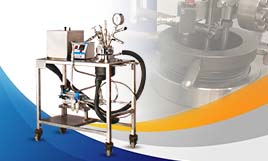Ceramic & Glass
Knowing the several properties like the change in thermal length for the sintering of technical ceramics, specific heat capacity for modified glass and phase transitions along with the precise thermal conductivity values of inorganic building materials has a very high practical importance in the field of Ceramic and Glass.
Particularly, Simultaneous Thermal Analysis (STA) is ideally suited to investigate issues like the transition temperature of the modified glass, the binder burnout of polymer binder, the decomposition behavior of inorganic building materials, and the dehydration of ceramic materials by the subsequent application of evolved gas analysis (QMS). Generally, the simultaneous application of Differential Scanning Calorimetry (DSC) and Thermogravity to one and the same sample inside a single instrument is referred to by Simultaneous Thermal Analysis. There are obvious advantages as the conditions of the test are completely identical for the DSC signals and TGA. Further, the sample throughput also improves as from each test run, more information can be achieved. The method of choice to investigate shrinkage and expansion behavior during ceramic sintering is Dilatometry. For the precise determination of thermal conductivity, HFM and LFA are versatile methods.
In the Middle East, BCL can offer you Thermal Analysis equipment of Ceramic and Glass from the house of NETZSCH.



.jpg)




